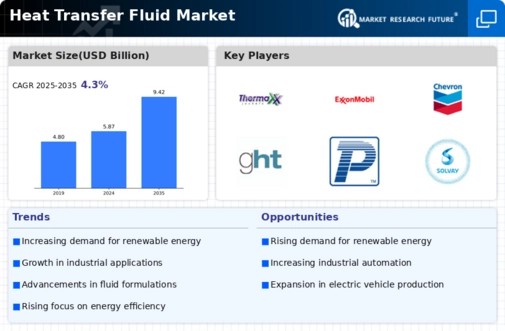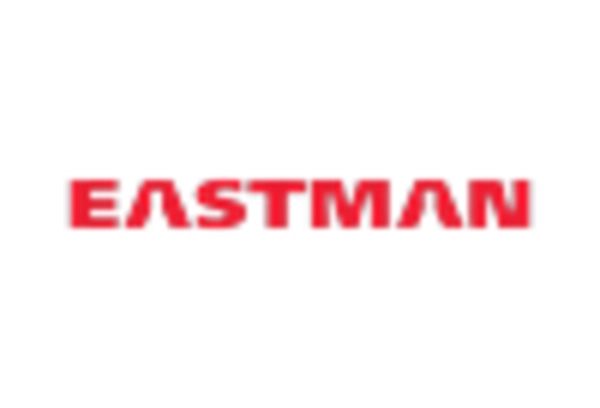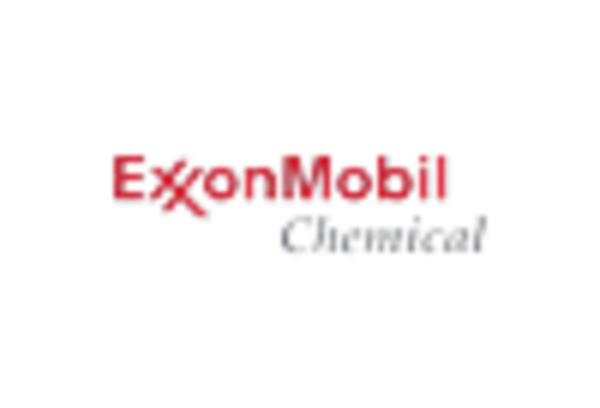Market Share
Heat Transfer Fluid Market Share Analysis
In the highly competitive Heat Transfer Fluid (HTF) market, companies employ various positioning strategies to gain and maintain market share. One key strategy is differentiation through product innovation. Manufacturers invest in research and development to create heat transfer fluids with enhanced properties, such as higher thermal stability, improved heat transfer efficiency, and eco-friendly formulations. By offering unique and advanced products, companies can distinguish themselves in the market, attracting customers seeking superior performance and sustainability.
Strategic partnerships and collaborations are another common market share positioning strategy in the heat transfer fluid industry. Companies often form alliances with other industry players, research institutions, or technology providers to leverage complementary strengths and resources. Collaborations can lead to the development of innovative solutions, expanded product portfolios, and increased market reach. By joining forces with key stakeholders, companies can enhance their competitive position and better address the evolving needs of customers.
Targeting specific industry verticals is a focused market share positioning strategy. Heat transfer fluids find applications across diverse sectors, including automotive, pharmaceuticals, chemicals, and solar energy. Manufacturers may tailor their products and marketing strategies to cater to the unique requirements of a particular industry. This targeted approach allows companies to become specialists in serving specific niches, building a strong reputation and customer base within those segments.
Cost leadership is a classic market share positioning strategy wherein companies aim to become the low-cost provider in the market. This involves optimizing production processes, achieving economies of scale, and controlling operational costs to offer competitive pricing. While cost leadership may not always entail product differentiation, it can be an effective strategy to attract price-sensitive customers and gain market share through affordability.
Geographical expansion is a crucial strategy for companies looking to increase their market share in the heat transfer fluid industry. This involves entering new markets or expanding operations in existing regions. As industries and infrastructure projects grow globally, manufacturers can capitalize on emerging opportunities in different geographic locations. Understanding and adapting to the specific needs and regulations of each region is vital for successful market expansion.
Brand building and effective marketing play a pivotal role in market share positioning. Establishing a strong brand image through consistent messaging, quality assurance, and customer satisfaction can contribute to a company's market leadership. Effective marketing campaigns that highlight product features, reliability, and environmental benefits can resonate with target audiences, influencing their purchasing decisions and contributing to market share growth.
Customer relationship management is an integral part of market share positioning strategies in the heat transfer fluid market. Building and maintaining strong relationships with customers through excellent service, technical support, and customized solutions can lead to customer loyalty. Satisfied customers are more likely to repeat purchases and recommend products to others, thereby contributing to the company's market share growth.
Continuous improvement and agility in response to market trends are essential strategies for maintaining and growing market share in the heat transfer fluid industry. As technological advancements, environmental regulations, and industry standards evolve, companies need to stay ahead by adapting their products and strategies. Being proactive in addressing emerging challenges and opportunities ensures that a company remains competitive and retains its market share over the long term.
companies in the heat transfer fluid market employ a combination of differentiation, partnerships, industry targeting, cost leadership, geographical expansion, brand building, customer relationship management, and continuous improvement strategies to position themselves and gain a competitive edge. The dynamic nature of the industry requires companies to be flexible and innovative in their approaches to effectively navigate the evolving market landscape and secure a prominent share in the highly competitive heat transfer fluid market.

















Leave a Comment